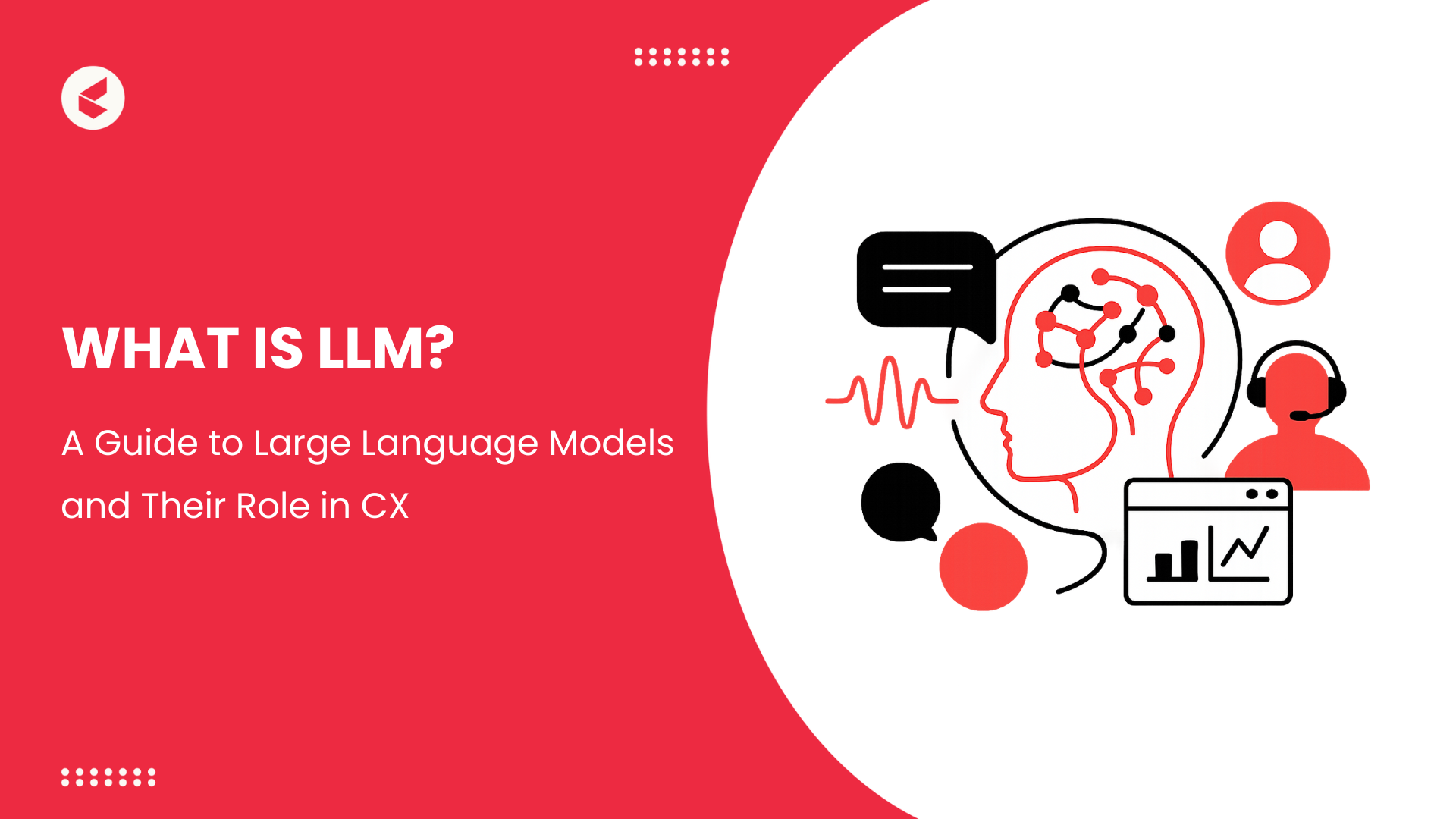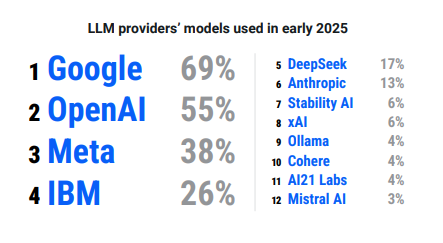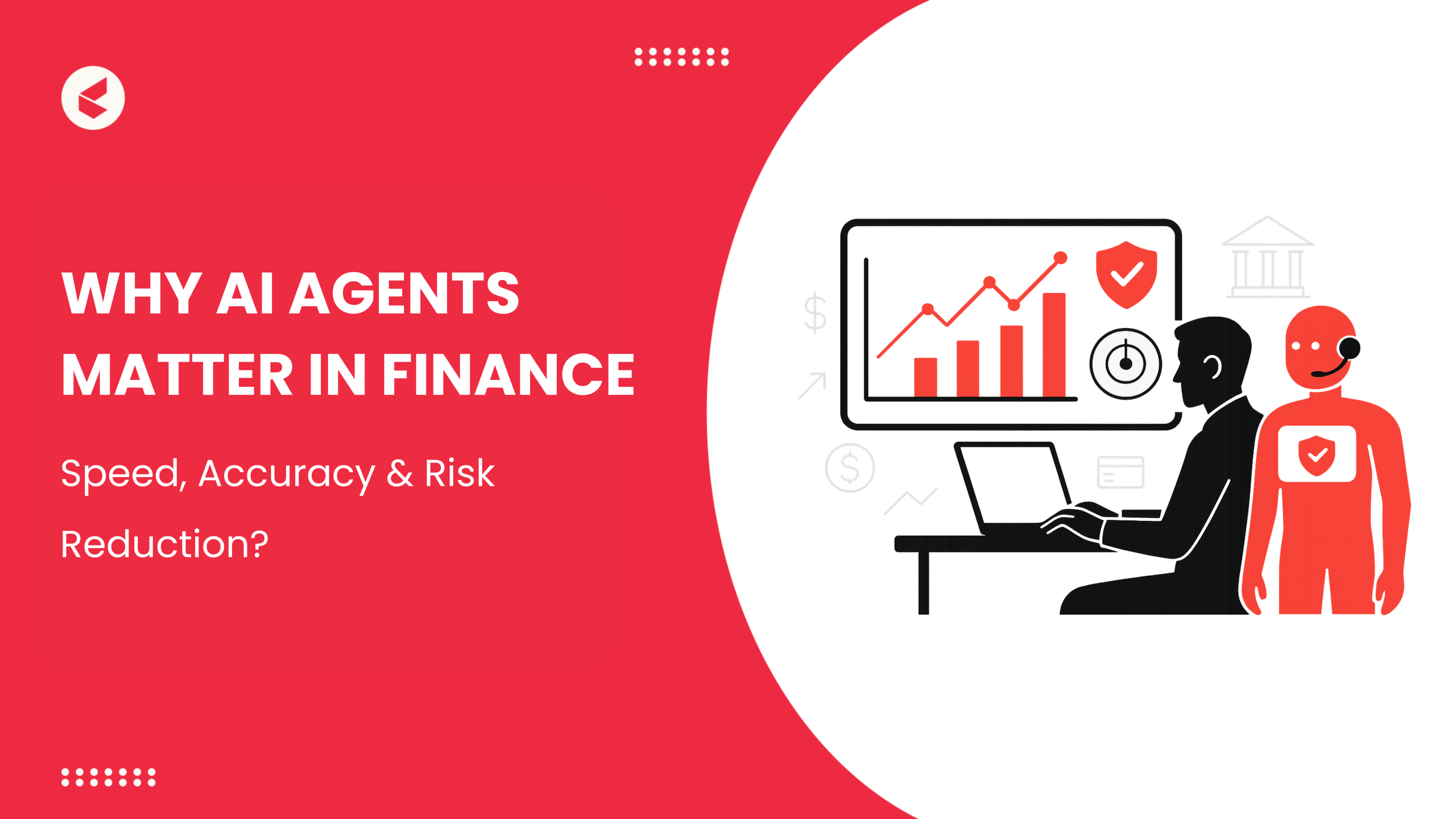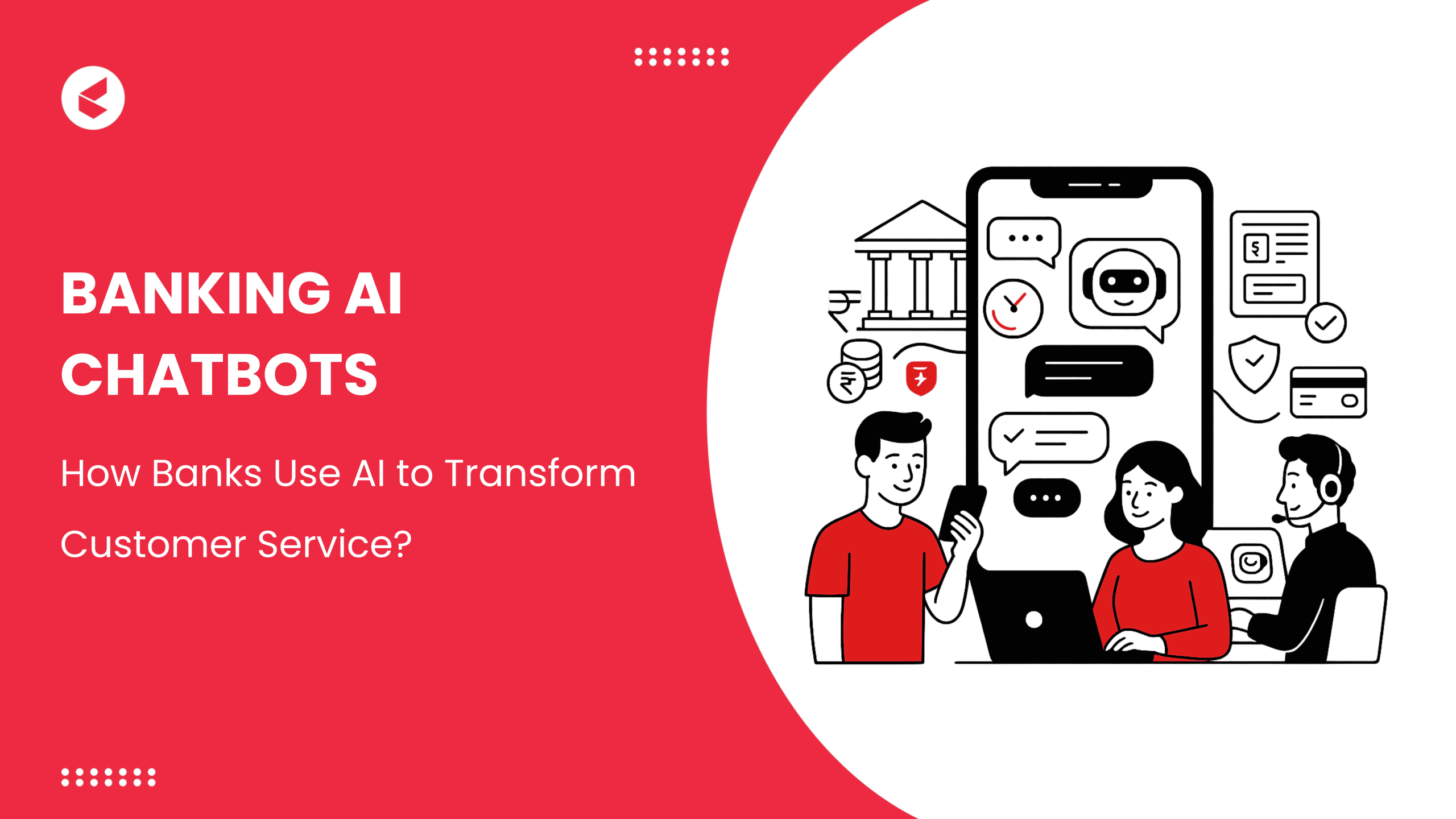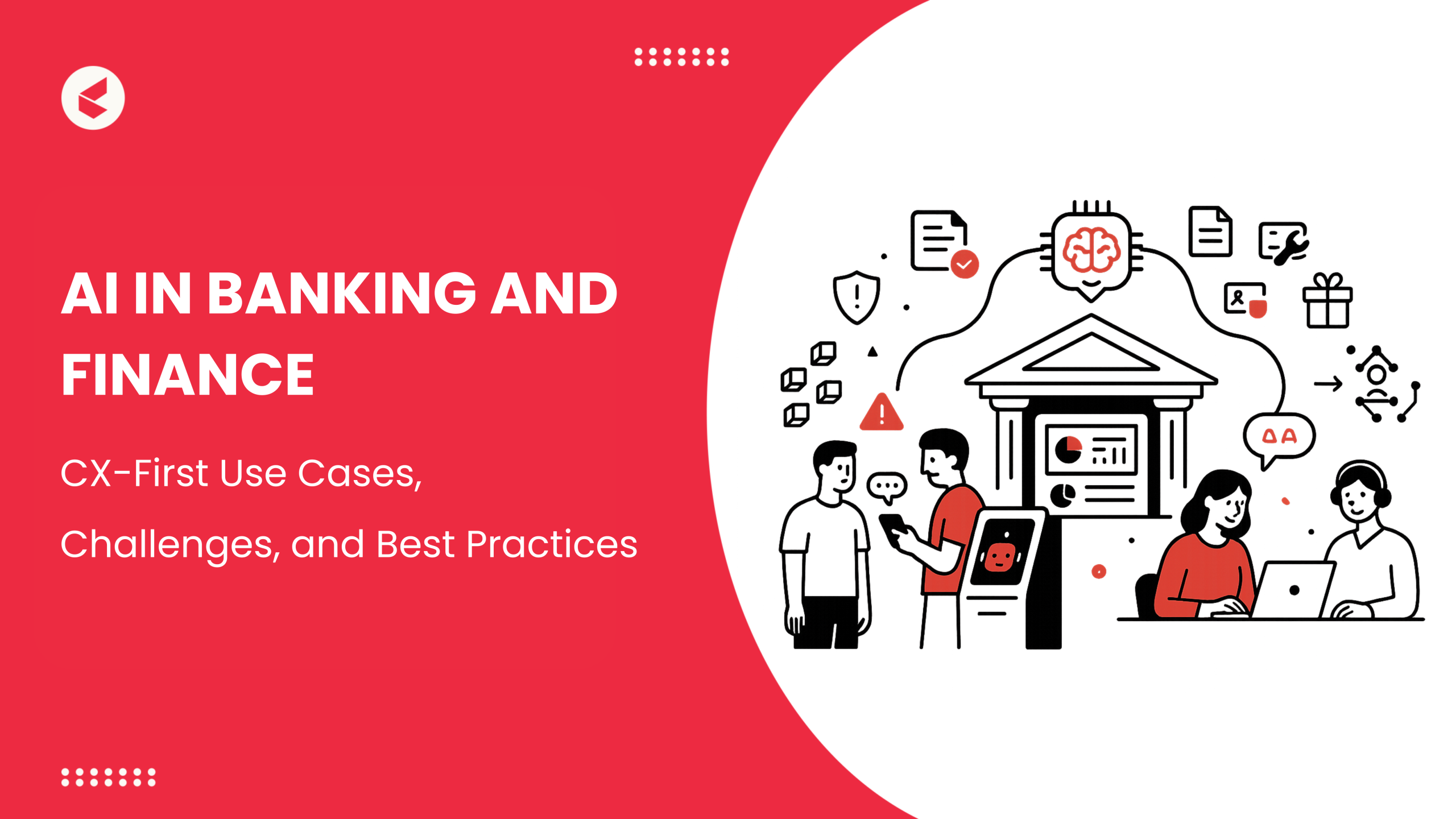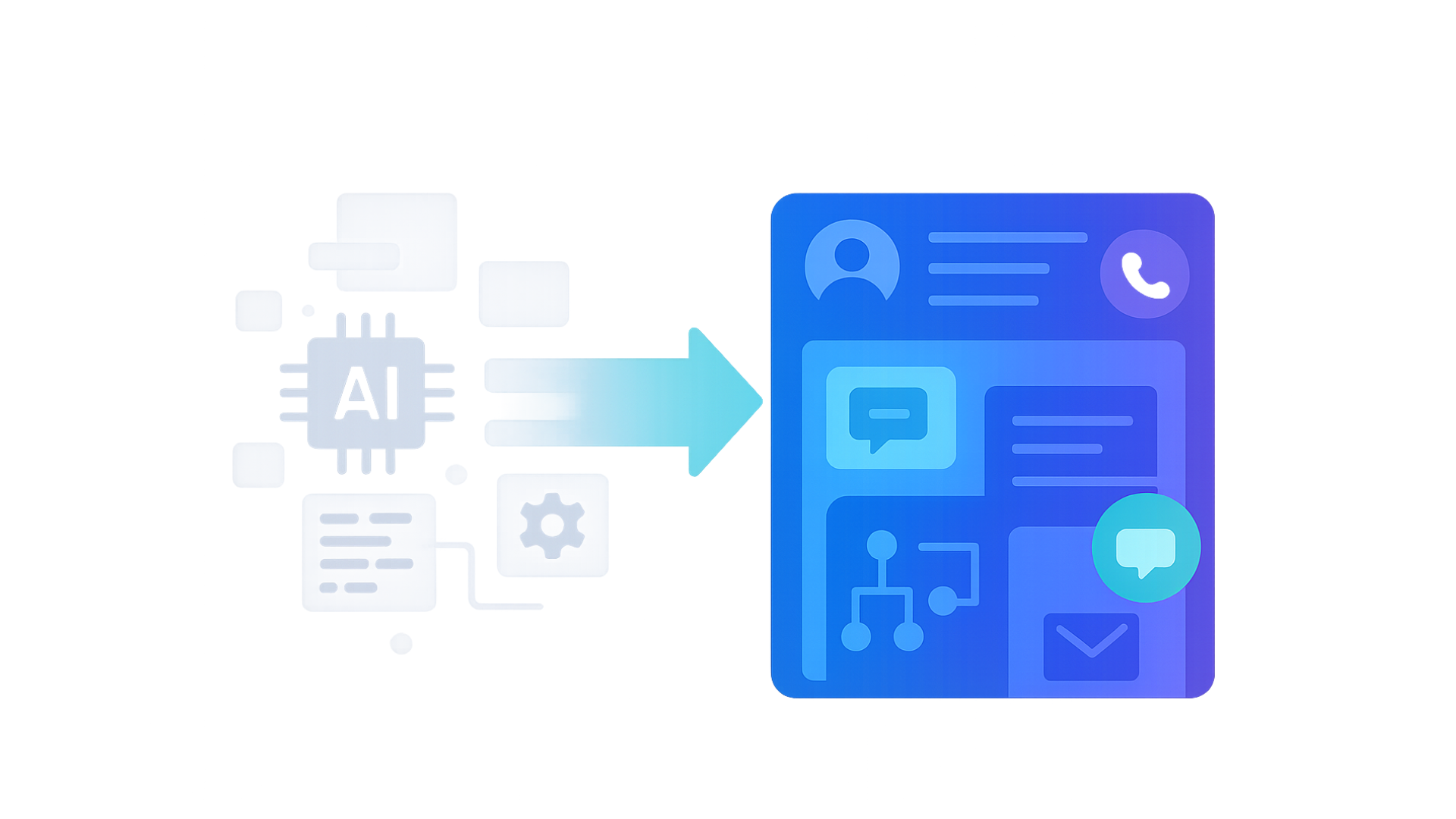AI has moved from a futuristic concept and is now actively shaping how businesses interact with their customers. At the forefront of this tech are Large Language Models (LLMs), advanced AI systems trained on massive datasets to understand and produce language resembling human speech.
This tech is now pivotal in helping businesses meet customer expectations, which at the moment are instant, highly personalized interactions, the moment they reach out. The investment numbers reflect the same.
A recent enterprise survey conducted by Kong Research found that 72% of leaders are planning to increase spending on LLMs this year. One-third of them are already allocating upwards of $250,000 annually.
For leaders in charge of customer experience (CX), this technology opens up a world of opportunities to create personalized responses and truly customized experiences for your customers.
To make the best of this tech, you first have to understand it, and that’s what this blog is about. It will break down what LLMs are, how they work, and how they can be applied to improve your CX game.
What is a Large Language Model?
LLMs are a specific type of machine learning technology that are trained on a massive amount of textual data, like books, articles, and websites. Their objective is simple: to understand language the way humans do and generate responses in a manner that sounds natural.
Now it’s essential to understand that LLMs and AI are not the same thing. AI, as the name alludes to, is a field that includes any technology that mimics human intelligence, i.e, can learn, reason, or recognize patterns. Machine learning, robotics, computer vision, and fuzzy logic are just a few technologies that come under the gamut of AI.
Natural Language Processing (NLP) is a subfield of ML that focuses specifically on enabling machines to understand and interact through human language. LLMs are the most common forms of this technology.
In the context of CX, their core functionalities translate to:
- Understand text: interpret customer queries, requests, or instructions.
- Generate text: generate query responses, order summaries, or even entire documents.
- Carry conversations: Interpret the context of a conversation and remember it across multiple customer interactions without losing track of it.
If you’ve ever interacted with Alexa, Google Assistant, Siri, ChatGPT, Gemini, or a customer service chatbot, you’ve been interacting with an LLM all along. The LLM analyzes what was said and then responds with a contextual answer that matches the flow of the conversation.
How do Large Language Models Work?
The tech behind LLMs is modelled after the human brain. Just like the brain, LLMs have millions of tiny processing units called neurons that pass information between them. Each neuron can take in information, process it, and pass on what it has learnt to the next, and adjust its behaviour accordingly.
To understand how LLMs process language so effectively, we need to understand their core design, which is:
1. Transformer Architecture
In an LLM, these neurons come together to form a neural network. What makes LLMs tick is a specific type of architecture called Transformers. This architecture layers neurons in a very specific manner that helps an LLM understand human language.
Instead of processing words one by one, here learning is achieved by looking at the entire sentence or paragraph at once using an ‘attention mechanism.’ This mechanism allows the model to focus on the most relevant parts of a sentence or paragraph when generating a response. Each layer helps the model grasp different aspects, like grammar, context, and meaning.
With this architecture in place, the next step in building an LLM’s capabilities involves two key training phases: pre-training and fine-tuning.
2. Pre-Training and Fine-Tuning
Another key concept to know when it comes to understanding LLMS is pre-training and fine-tuning.
Pre-training is a process where the LLM is fed vast amounts of ‘generic’ data. The goal here is to help it understand the basics of language, like grammar, speech patterns, or reasoning.
Fine-tuning is the next stage where LLMs are fed smaller, more specific data sets to help them refine their understanding of a specific industry’s language skills. In the case of CX, this could mean training the model to provide more accurate product recommendations or contextually specific customer support responses.
This is the reason why different models excel at specific tasks:
- GPT-4o excels at text generation and creative writing.
- Gemini 2.5 Pro excels at complex problem-solving and reasoning tasks.
- Mistral Large 2 excels at coding.
- LLaMA shines when it comes to multilingual support.
In short, pre-training helps an LLM develop broad language skills, while fine-tuning helps adapt the model for a specific purpose.
What are the Key Characteristics of LLMs?
What makes LLMs such powerful and capable pieces of tech are the following core characteristics:
1. Scale
LLMs are trained with billions of parameters known as weights and biases, if you want to get into specifics. Think of a parameter like a fine-tuning knob of a radio or a musical instrument. The more you have, the more adjustments you can make to the output. In the context of LLMs, the number of parameters represents the model’s complexity.
Models like GPT-5 or LLaMA have billions (or even trillions) of these parameters, which is what makes interacting with them feel almost human-like.
2. Versatility
Since LLMs are trained on vast data sets, they are also versatile in their capabilities. A single LLM can draft text, or summarize content, answer questions (if it has been trained on that topic), and so on.
From the perspective of CX, this means that a single AI solution can handle a vast array of conversations with customers, be it complex technical support or answering simple queries.
3. Contextual Learning
Another amazing feature of LLMs is their ability to learn in context, also known as contextual learning. This means they can understand and perform tasks even with very few examples (few-shot learning) or sometimes no examples at all (zero-shot learning).
4. Continual Learning
Finally, the pièce de résistance of LLMs is the ability to learn continuously through fine-tuning. In the context of CX, an LLM can continually learn from every interaction with your customers and improve its responses over time.
Leading LLMs and Companies Driving the Space
There are several companies that have become everyday names that are driving the LLM space.
1. Open AI
OpenAI’s GPT series needs no introduction and brought LLMs to the limelight. It excels at text generation and reasoning. As a result, it has been widely adopted by organizations to power their chatbots and enterprise-level co-pilots.
As per a recent enterprise survey conducted by Kong Research, 55% of companies are currently using OpenAI’s models.
2. Google
The same survey revealed that 69% of enterprises rely on Google’s in-house LLMs, i.e, Gemini and the Gemma models. Google’s models are lauded for their advanced reasoning capabilities and multimodal support.
3. Anthropic
Anthropic’s LLM, Claude, focuses heavily on ethical AI. Its models are trained to be unbiased, safe, and reliable. This makes them perfect for organizations where security and compliance are top priorities.
4. Meta
Meta has taken an open-source approach to its LLaMA series of Large Language Models. This approach has made it a favorite in academic and experimental settings. Enterprises that want greater control over the AI stack prefer this model too.
5. Smaller Players
Other players like Cohere, AI21 Labs, and Stability AI are building ecosystems targeting developers and enterprises who want to build their own applications. Their emphasis is often customization, speed, and cost efficiency.
There are also several benchmark tests for LLMs to evaluate them on different parameters:
- GLUE (General Language Understanding Evaluation) focuses on language understanding tasks, like sentiment analysis and textual entailment.
- MMLU (Massive Multitask Language Understanding) specifically tests knowledge across 57 academic subjects using multiple-choice questions.
- HellaSwag evaluates a model’s ability to reason in a common-sense manner.
- AlpacaEval is designed to test an LLM’s flexibility and performance on specific tasks.
Applications of LLMs Across Industries
Due to their capabilities, LLMs have already seen widespread adoption across multiple industries, such as:
1. Healthcare
LLMs in the healthcare sector are being used across all sub-verticals. They are being put to use in everything from personalizing patient interactions, providing quick access to information, to assisting clinicians in generating discharge notes. Their introduction has shown significant transformation across the board.
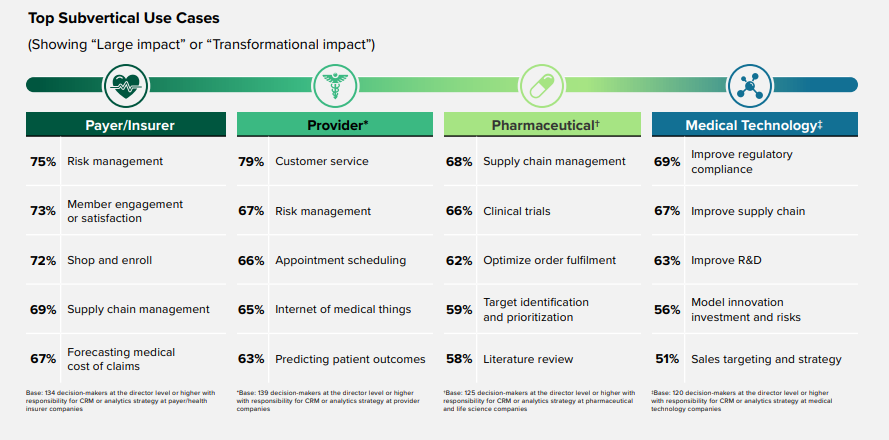
2. Finance
In finance, organizations are utilizing LLMs in fraud detection by scanning massive volumes of transaction data for anomalies and patterns. Organizations like Helvetia, a Swiss insurance group, are also using them as advisory assistants to give customers tailored insights on investments.
3. Retail/E-commerce
In retail, LLMs are utilized for both customer-facing (tailored product recommendations, customer support, conversational shopping) and back-office functions (content creation for product listings, sentiment analysis, QA).
Brands like Lindex are deploying them as co-pilots to help their employees deliver personalized services and to assist them with their daily tasks.
4. Education
LLMs are making knowledge retrieval more accessible to educators and students alike due to their vast academic data sets. Research published in the National Library of Medicine shows that the use of LLMs in education improves language proficiency over and above the usual benefits that LLMs provide.
Additionally, they can also be used to provide personalized lessons for students with learning disabilities or based on individual performance. They also aid educators in generating lesson plans, fun quizzes, or even exam questions.
LLMs in Customer Experience (CX)
The common denominator in all the above scenarios is:
- A reduction in manual effort.
- The ability to deliver services faster, and
- The ability to reduce any friction.
This is exactly what LLMs have been doing in the CX space:
1. Intelligent Chatbots And Voicebots
Chat and voice bots are the most visible applications of LLMs. While the previous generation of bots relied on scripts, LLM-powered bots can handle open-ended questions and sense the mood of the conversation and adapt accordingly.
Companies like Stanley Black & Decker have seen a 17% improvement in CSAT Scores post-adoption of LLM-based tech to their CX operations.
2. Context-Aware Support
LLMs can keep track of prior conversations and respond with contextually accurate answers without the need for customers to repeat information over and over again. This capability goes a long way in improving the CX, which is a critical plus, as most customers now are willing to take their business elsewhere after a single bad experience.
3. Real-Time Assistants
LLMs are also serving as real-time assistants or co-pilots for human agents. The help with tasks such as auto-drafting emails and chat replies, summarizing interactions, and suggesting apt responses in real time. Netmeds, a leading online pharmacy, has seen a 50% reduction in Average Handling Times (AHT) using LLMs in this role, among other benefits.
4. Quality Assurance and Sentiment Analysis
Finally, LLMs are also being utilized to review conversations across their CX touchpoints to detect customer frustration or flag compliance issues. This gives leaders actionable insights on what they need to focus on in terms of training or their processes to improve their CX.
The impact of LLMs speaks for itself. In fact, according to a recent PwC survey of business leaders, 34% state that the average company will be out of business if they are not willing to evolve its business models to capitalize on this tech.
Challenges & Risks of LLMs
As powerful as LLMs are, like every piece of technology, they also have their downsides. As a CX leader, you must know them before you consider their deployment.
1. Hallucinations
LLMs have been known to generate and present false information with absolute confidence occasionally. These hallucinations can be risky in an industry dealing with sensitive or legal information. The solution is to monitor and fine-tune the LLM and have a human-in-the-loop system in place if required.
2. Bias and Fairness
Since LLMs are trained on human-generated content, any biases in the training data can be reflected or amplified in their output. This is not something you want in a customer-facing role. The good news is that bias mitigation tools are available to help address this issue.
3. Cost and Compute Requirements
Running and fine-tuning high-parameter models demands substantial infrastructure, energy, and investments in hardware. For smaller organizations, this can be a hindrance when it comes to experimentation and adoption.
4. Data Privacy
LLMs trained or fine-tuned with customer data could inadvertently expose or memorize sensitive information. They can also be vulnerable to attacks via prompt injection, data poisoning, or DDoS attacks. That said, there are several AI risk management solutions available on the market to secure your LLMs.
Future of LLMs in CX
LLMs are still in the nascent stages of adoption in the CX space. Chatbots, intelligent assistants, and sentiment analysis are just the beginning.
Multimodal LLMs will soon become mainstream in CX. This means that customers will be able to describe their issues to LLMs by uploading a photograph, describing the issue vocally, and getting instant resolutions.
Industry-specific models, trained to address the unique needs of individual sectors, are also being rolled out. These vertically oriented LLMs will be more precise, efficient, and safer to deploy to sensitive environments. Industry-specific guardrails will also be built into the model.
In the context of CX, Kapture is accelerating the development of CX-first Agentic AI platforms, which Gartner predicts will solve almost 90% of all customer issues autonomously within the next 4 years.
LLMs are the Key to Exceptional CX
Large Language Models are the future of how businesses operate across industries. In the specific context of CX, the conversation should not be “Should we deploy them?” but instead “How best to deploy them?” The advantages they bring to CX in the real world are no longer fiction.
They are already helping businesses cut costs, improve their metrics across the board, and drive customer loyalty.
At Kapture, we believe the future of CX lies in LLM-powered, vertical-first orchestration, and our customer experience automation platform is designed to do just that. The platform integrates bespoke AI workflows, omnichannel support, real-time assistance, and more.
Book your personalized demo today and see how Kapture transforms your CX operations.
FAQs
You can deploy LLMs in your organization as is, especially during the pilot deployment phase. That said, fine-tuning the LLM with enterprise-specific data like FAQ, chat histories, and transcripts will help improve its accuracy.
LLMs can handle repetitive, high-volume requests like password resets, billing clarifications, product details, and order tracking exceptionally well.
LLM is a specific kind of AI, so all LLMs are AI, but not all AI systems are LLMs. AI is a broad term used to describe systems that perform tasks requiring human intelligence. But LLMs are used specifically to process and generate human language.
